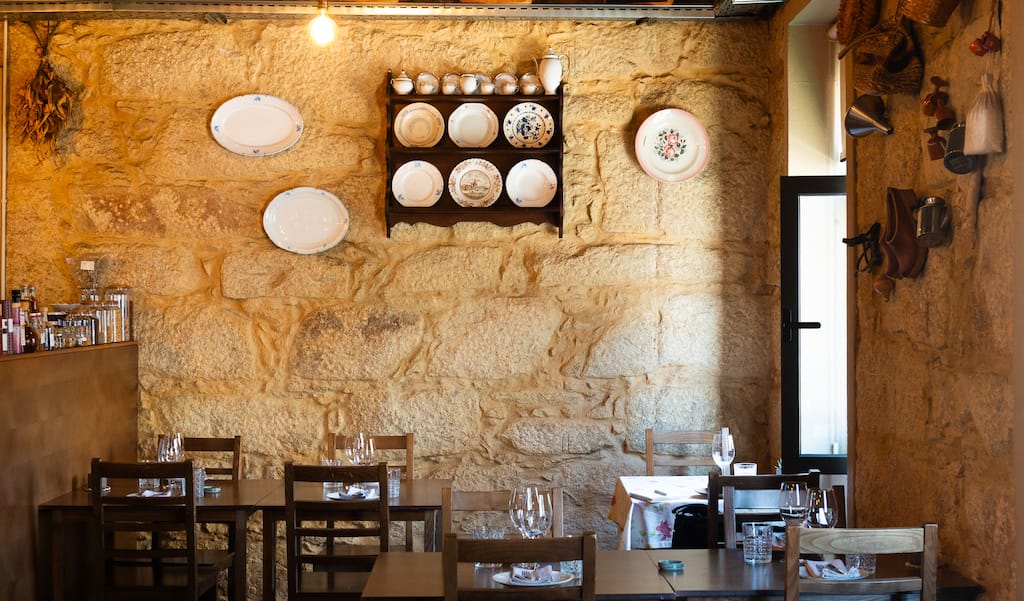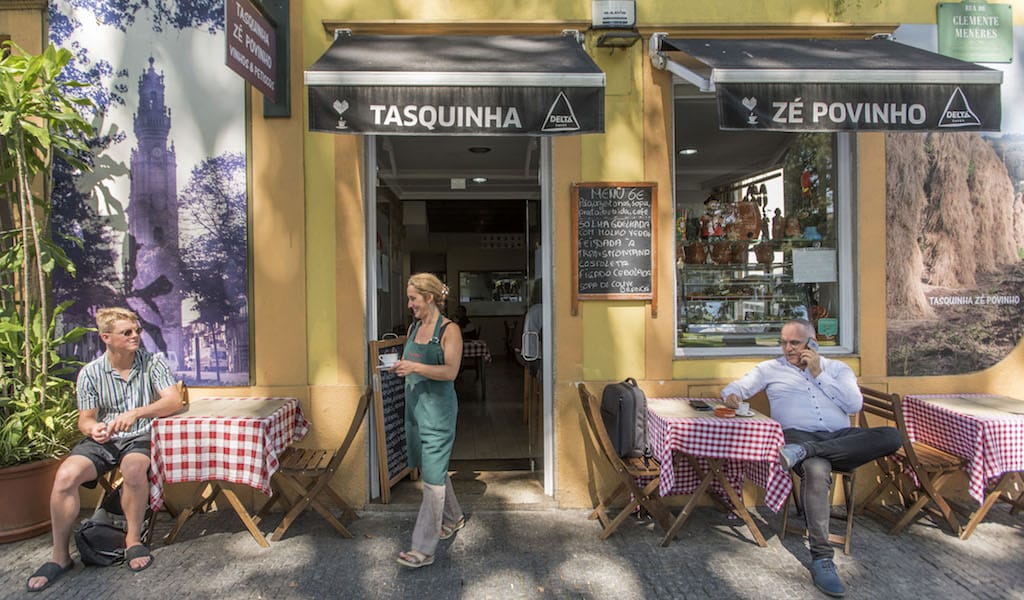It’s a warm summer day, yet inside Stramuntana, a restaurant in Porto devoted to the cooking of Portugal’s northern Trás-os-Montes region, a hearth is blazing.
“In the past, people in Trás-os-Montes used wood-burning ovens all year,” says Lídia Brás, Stramuntana’s co-chef and co-owner, when we express our surprise in seeing a fireplace in operation during the hotter months. “There was no electricity or gas. Everything here is thought through to be authentic.”
It’s a small lesson in the foodways and culture of Portugal’s northernmost region, as well as an illustration of this restaurant’s deep dedication to authenticity.
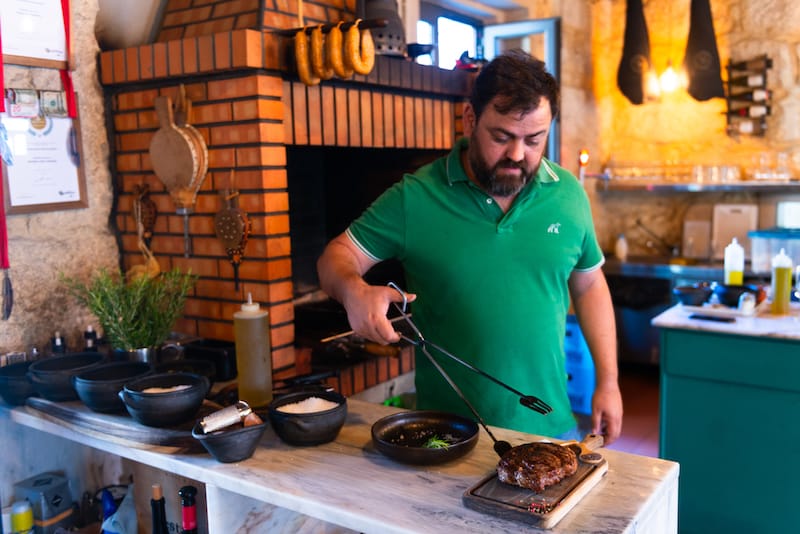
In Mirandês, one of Portugal’s three official languages, Stramuntana means “Behind the Mountains,” and comes from the region known as Trás-os-Montes, just a couple hours northeast from Porto by car. It’s a good indicator of the remote vibe of this rocky, rugged terrain that borders Spain. Lídia, originally from Estevais, a village of 40 people in the country’s far northeast corner, is one of about 5,000 native speakers of Mirandês; today she uses the language in Instagram posts to promote the restaurant that she runs along with her husband, Fernando Araújo, also a native of the north.
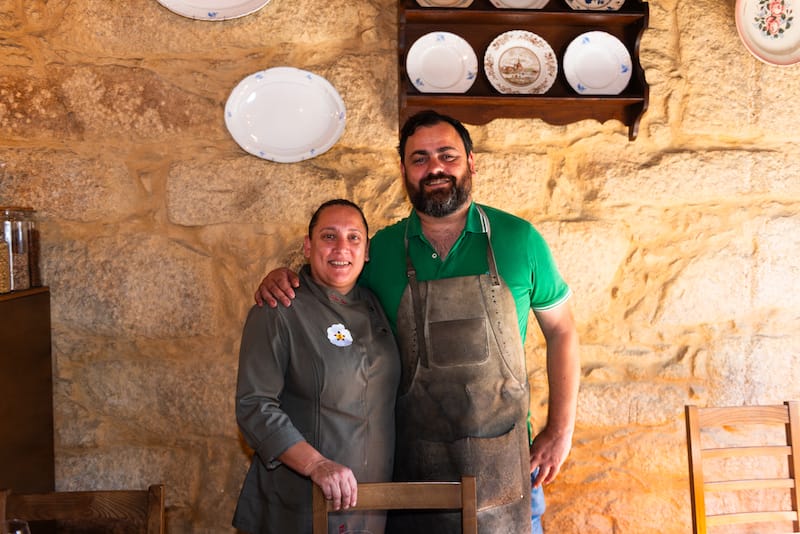
For nearly 16 years, the couple owned and cooked in restaurants in Porto that served rustic northern dishes. But according to Lídia, these eateries tended to emphasize quantity over quality. With Stramuntana, open for three years now, the pair finally have the chance to showcase the food of their home region – as well as its language and culture – in a more nuanced, refined way.
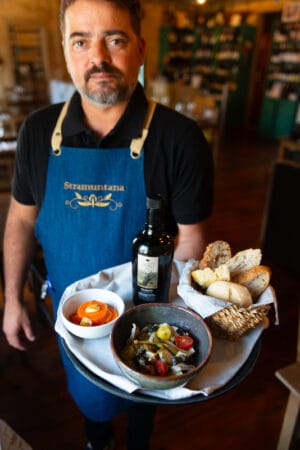
“Eighty percent of our ingredients come from Trás-os-Montes,” Lídia tells us. The remainder, she explains, come from sources including her mother’s farm or are made in-house. An example of the latter is the restaurant’s exceptional baked goods. On a recent visit these include a basket with three types of bread in addition to starters that included folhado de vitela, a flaky, buttery pastry filled with tender veal, and folarico, a “finger food” take on folar transmontano, the region’s slightly sweet, rich pan-baked bread with egg and smoked meats inside.
“The only thing not made here are the meats!” says Francisco, the sentiment ostensibly that it’s best to leave this task up to the smokehouses of the far north, which are some of the most highly regarded in Portugal.
As a starter that brings together five types of bread just might possibly suggest, the menu at Stramantuna reflects a relatively heavy, hearty cuisine. But talk with the couple and they’ll reveal that this comes as the result of some push and pull.
“What we do here is traditional with some modern touches,” says Fernando.
“The dishes are made the traditional way – with lard, using rustic methods – but sometimes we add a little twist,” Lídia adds. “People think traditional food isn’t so attractive, so I try to make it look a bit better to the eye.”
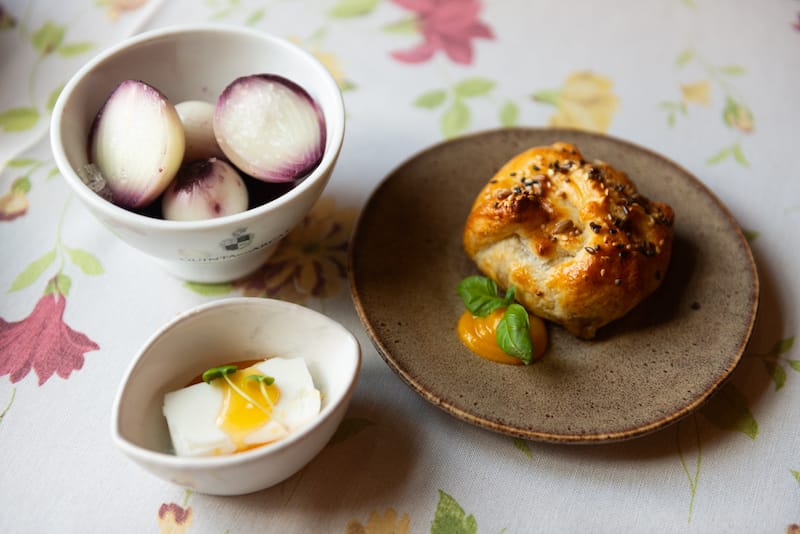
A good example of this is the Stramuntana’s take on salada de bucho, a salad based around boiled pork stomach. They’ve taken this traditional but admittedly homely ingredient and have given it vibrancy and lightness via additions of green capers, bright red peppers and cherry tomatoes. Pickled onions boasting a beautiful purple hue, a perennial menu item at Stramuntana, and a puddle of practically neon green olive oil from Portugal’s north are other starters that kick off our meal via splashes of color.
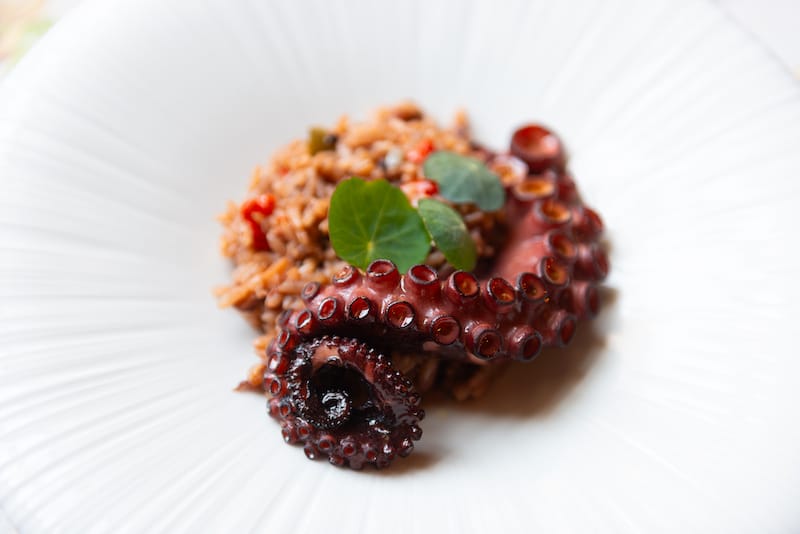
What follows these is a succession of hearty yet stunning, delicious mains: an Instagram-worthy, fragrant arroz de polvo, rice cooked in octopus broth and crowned with a single braised tentacle; rich, smokey cuscuz – yes, that’s couscous, a staple in Trás-os-Montes, and a dish thought to have been brought there by Jews – topped with salt cod; and rojões Trás-os-Montes-style: cubes of pork belly braised until meltingly tender in wine and lard, and supplemented with chestnuts.
“These are half portions!” says Lídia, reading our expression somewhere between the rice and the couscous. “Usually when you go to Trás-os-Montes, you start eating at noon and end at midnight. Then people ask you if you want more!”

It’s only after these dishes that the hearth comes into play. Fernando, Stramuntana’s grill-master, fueled by tiny glasses of beer, brings us a platter of cordeiro mirandês, fatty, smokey, fall apart tender lamb from Trás-os-Montes. Grilled with coarse salt and finished with a drizzle of olive oil, it’s the epitome of quality ingredients cooked simply, and is one of our favorite dishes at Stramuntana.
At dessert, things stray – just slightly – from tradition. Stramuntana’s signature closer is pudim de grelos, a steamed dessert that takes the utterly Portuguese form of rich, sweetened eggs, but is here served on a base layer of pureed bitter greens. The dish is Lídia’s invention – the greens playing a clever counter to the sweet – and it bridges the gap between traditional recipes and subtle, informed tweaks.
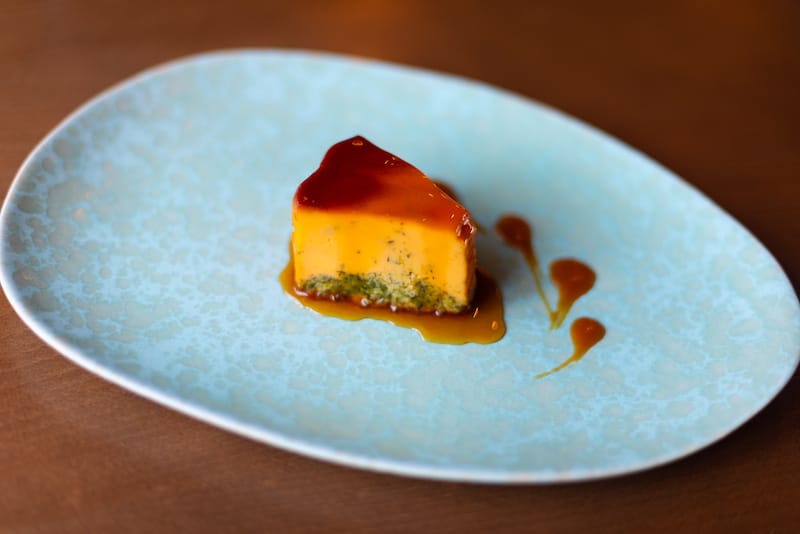
Coming up for air after dessert, we’re reminded of that hearth and the crockery on the walls, pleasant conversations with the owners between courses, and warm, homey gestures such as Fernando plopping a whole bottle of wine down on our table when we’d only ordered a glass.
“It’s comfort food – grandma’s cooking,” Lídia says, and we leave Stramuntana feeling distinctly warm, not from that hearth, but rather from that particular sensation that you get after a home-cooked meal.
Austin BushAustin Bush
Published on September 11, 2023
Related stories
June 12, 2023
PortoWhen we arrived, there were one or two customers quietly drinking wine at the bar. Later, a man entered and bought cured ham by the kilo, complaining about how much fat it contained. A food tour stopped by, filling the silence with English-language explanation. A bit later, the mailman stuck his head in; he had…
October 4, 2021
PortoWhen the late 19th-century Portuguese artist and cartoonist Rafael Bordalo Pinheiro wanted to create a vehicle through which to mock and criticize the country’s powerful elite, he settled upon the character Zé Povinho, an unsophisticated country laborer who served as a stand-in for the average citizen. While some Portuguese people took umbrage with their country’s…
July 14, 2021
Mexico CityIn Mexico City, we love our quick doses of Vitamin T: tacos, tortas and tamales. But what to do when we are itching to sit down for a hearty lunch (the most important meal of the day for many Mexicans), and don’t have the time or energy to rush to and from home in the…







































